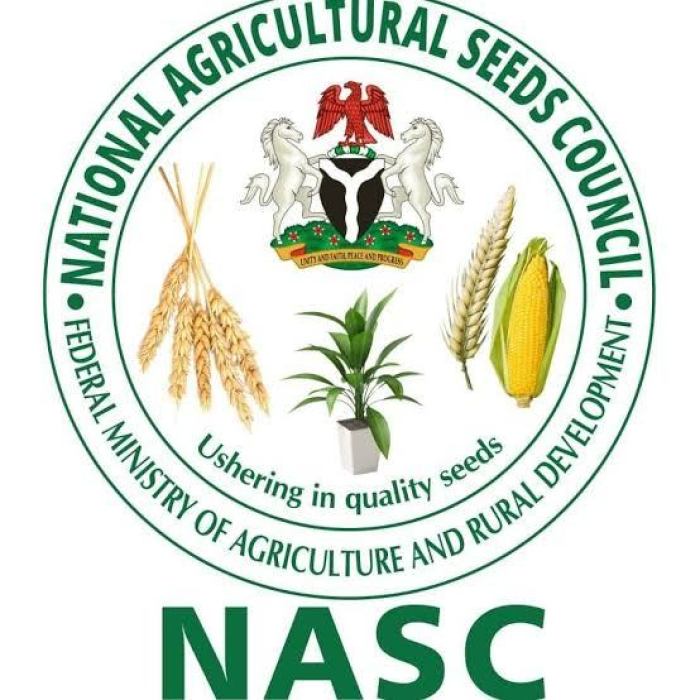Every seed traded in Nigeria without codex is ‘adulterated or fake’
As the rain-fed farming season has begun, farmers are strongly advised to buy seeds that are packed with seedcodex, which authenticates a genuine seed. The National Agricultural Seeds Council (NASC), the country’s institution with the mandate for regulating the seed industry, in collaboration with the Kingdom of the Netherland through its Collaborative Seed Programme (CSP) […]

As the rain-fed farming season has begun, farmers are strongly advised to buy seeds that are packed with seedcodex, which authenticates a genuine seed.
The National Agricultural Seeds Council (NASC), the country’s institution with the mandate for regulating the seed industry, in collaboration with the Kingdom of the Netherland through its Collaborative Seed Programme (CSP) held its quarterly seed platform meeting last week to discuss issues in the Nigerian seed system.
The meeting was part of the programme’s strategic pathway in establishing and institutionalising a functional national seed sector platform to improve sector coordination and governance.
The first quarter meeting, which was held virtually, focused on the theme “The Seedcodex: Improved seed quality assurance providing farmers’ value for money.”
The NASC’s chief agricultural officer on quality assurance, Mr Osho-Lagunju Bankole, in a keynote presentation titled, “Implementation of the Seedcodex in Nigeria: Current Status and Ambitions,” explained why farmers and other stakeholders must understand the Seedcodex concept.
What Seedcodex is
According to him, Seedcodex is an electronic authentication tool for all crops, which is mandatory for all seed classes traded in Nigeria for traceability, eliminating adulteration and entrenching integrity of traded seeds.
“Seedcodex stands on the legality of seed law 2019, section 32, subsection 1, which states, “In addition to the labelling requirement under section 31, certified seeds shall not be placed in the market unless they are labelled with a certification label issued by the official certification service or authorised private certification body.
“With this law, every seed traded in Nigeria that does not have a codex is more or less categorised as adulterated or fake seeds. In every traded seed market, there’s a need for label and the label is in term of international standards. The seed council label starts with paper label.
Why it is necessary
The issue of adulteration of process and instrument has been a major challenge in the Nigerian seed industry.
He said the agency found out that the fake seed breeders supply seed that are not traceable and present it to vulnerable farmers, who in turn do not have value for their money. Non-durable seed materials in most cases, which are supposed to be outside the bag, get cut off in the process of transportation, and the farmers do not have access to verify where their seeds are coming from or who is producing their seed.
The codex reduces the cumbersome process involved in ensuring that the agency gets certified seeds to farmers, which requires a lot of paper work. In addition, traceability in the industry was huge.
“In the present dispensation where everyone is going digital, the NASC thought it wise that the best way is to go digital to solve all these issues and to correct the failed safe system of labelling and digitalisation of operations,” he said.
How does the seedcodex work?
According to the council, the first process involves the submission of final seed field inspection report indicating passed seed lots with lot numbers, submission of laboratory test results for passed seed lots, submission of payment evidences for all certification charges (grower registration field inspection etc.); and lastly, an application letter showing the quantity of seed to be packaged, pack size and the number of tags/seedcodex required.
It has two phases. The first phase is what the seed certification officer does. It involves the collation of all reports, test, receipt, submission of the laboratory test and application for the seedcodex. This process is done online.
The second phase is where the seed codes are generated; and it is in five laps. The first lap is the receipt of the request, when the request is received at the headquarters. It is sent to the server, where the codex tag is generated. After the generation of the lot, the codex is collected and fixed on the bag. After that is to give life to the codex. This is what is called activation stage. From this stage onwards, the traceability system is activated. After sending the code to the codex verification number, which is 139, a farmer can then get information to show the authenticity of the seed, such as:
OK
TGX 1448-2E Species:
Soybean
Variety:TGX 1448-2E
Lot No:19-11-KD-22-22
Class: FOUNDATION
SEED
Testing Date: Mar/2020
However, the new innovation has its challenges, which the council needs to address, including cost per bag. That is a challenge for farmers and how to get them change from the old order to the new order.
He said some of the strategies of the NASC enculturated is to use massive awareness, simplicity of process, flexibility of cost, categorised tag for jumbo and regular sized seed.
